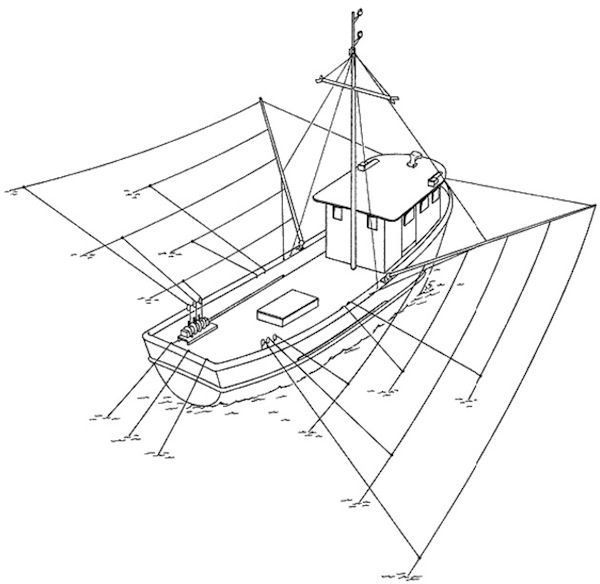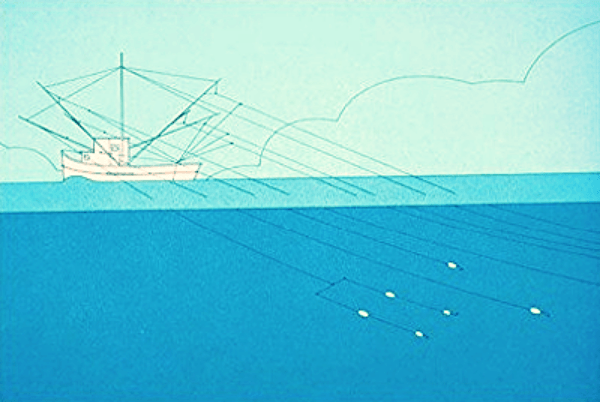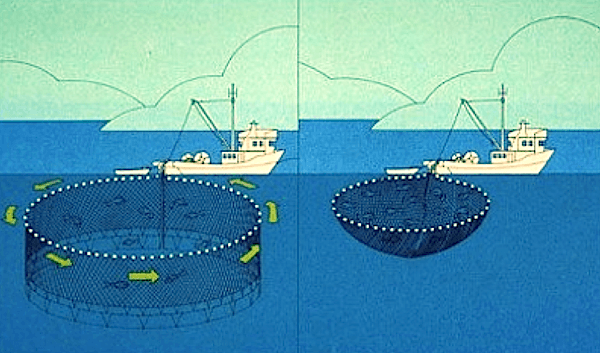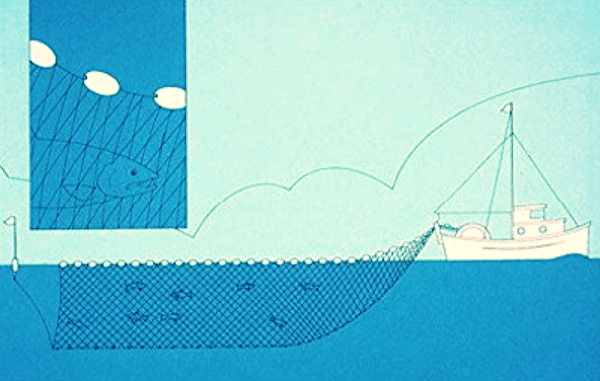The oceans have been a source of food since the beginning of human history. Sustainable fishing is an international movement that aims to restore the bounty of the ocean to ensure the survival of fish stocks for future generations.
Factory ships are designed to catch tremendous amounts of fish. They operate in international waters without quotas. A factory ship can process 90,000 kg (100,000 lbs) of cod in a single hour. Factory trawlers destroy marine habitat and ancient corals on the sea floor. Bycatch are fish caught unintentionally. Each year, millions of tonnes of bycatch are thrown back into the sea, dead or injured. [1]
Sustainable fishing requires smaller fish boats operating in well-managed fisheries. The boats are typically owned and operated by independent fishermen, working with small crews, based in local coastal communities. The fishing method depends on the target species.
Bottom Longline with Traps or Hooks are used for harvesting Sablefish. Baited hooks or traps are attached to a bottom longline and anchored to the ocean floor. These are placed in deepwater offshore, targeting depths between 1,600 to 3,300 feet (500 to 1,000 metres) to capture fish. Sablefish traps consist of a conical shaped steel frame covered with netting. The fish are attracted into the trap with bait. All traps have an escape ring to allow small fish to get out. Sablefish Longlines can be up to two miles (3.2km) long and have up to 2,000 hand-baited hooks.
Prawn Traps: The prawn trap is a large conical wire frame covered with netting. The baited traps are spread along the rocky ocean floor from 40m to 100m. Larger prawns are unable to escape while smaller prawns, crabs and fish escape through a hatch.








